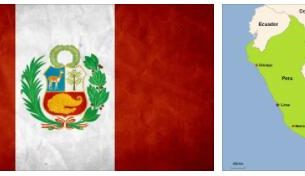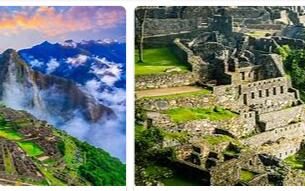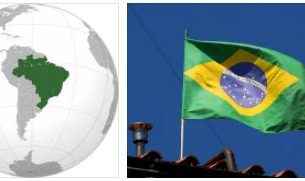An isolated geographical location, the little relevance of both the remote past and the colonial era, a human configuration in a high percentage of descendants of a recent immigration, the development of a large middle class, great prosperity and then inflation irrepressible, all this has given Argentine art different characteristics from the Latin American matrix, of which it is however a participant; however, his story was often intertwined with that of neighboring Uruguay.
The aspiration to participate in an extra-continental life is probably one of the causes of the formation, frequent in Argentina, of artistic groups (some of considerable importance or very daring), which, however, did not generate Latin American continental movements. In Argentine artists, moving abroad has been psychologically facilitated by their condition as recent immigrants, or at least involved in this situation, so that their innate cosmopolitan vocation has not produced in them the conflictuality of betraying their own cultural background, present in nations where the need to reconnect with the pre-Columbian world and with the Iberian-Indian one is very much felt. The most indigenous motifs of inspiration were the pampas, the montoneros, the gaucho, the neighborhood, the popular life, the light and the landscape. Perhaps it was the absence of a prestigious past that forced the adoption of concrete rationality, in Argentina achieved earlier and more than in other parts of the continent.
The ease of movement and the aggression of international innovations have allowed, starting from the Sixties, an immediate reception of artistic fashions: the adaptation to one’s own soil, when it is produced, takes place through a contained sensitivity, manifested in formal commitment.
Starting from 1960, the Torquato Di Tella Institute (operating for some years) acts as a catalyst for experimentation, even the most daring: new abstractions and figurations, primary structures, environments, extravagant happenings, etc. they find their space there. Since 1970 the avant-garde passion has been kept alive, also based in Buenos Aires, by the Centro de Arte Y Comunicacion (CAYC), which under the label Arte de Sistemas it promotes experiences in which it is the process, rather than the object, that contains the meaning; various addresses are supported, but always of an experimental brand or in any case gradually in line with last-minute positions: conceptual art, poor, cybernetic, ecological, up to neo-expressionism, in Argentina called Nueva imagen (in 1983 an exhibition is set up ). The CAYC also wanted to bring together artists from the continent under a political commitment. Although different, it should be remembered that in 1959 the Espartaco group, made up of a nucleus of six Argentine artists, including R. Carpani (b. 1930) who painted figures as if they were built of stone blocks, at M. Gromaire, he had drawn up a manifesto, For a Latin American revolucionary art, with the intention of involving the continent in an ideal political action. The interventions on nature by LF Benedit (b.1937), present at the Venice Biennale in 1970 with a swarm of bees placed in a transparent container, and those by L. Porter (b.1941) on the visual and mental trompe l’oeil: the real object and its representation and even the representation of representation. For Argentina 2013, please check physicscat.com.
To indicate the return to painting, as it happened at an international level, in 1972 the Fondación Lorenzutti set up the Panorama de la Pintura Argentina Joven exhibition at the Museo de Arte Moderno in Buenos Aires, in which artists under the age of thirty are present, almost unknown.
For the construction of the image, the new Argentine painting can eclectically use previous acquisitions of pop, new fi guration, surrealism, metaphysics, and introduce hyperrealistic elasticity (to mention only neighboring movements). As regards the ways of painting, he can use, in admixture, previous innovations of uniform drafts, of material emphasis, of gestural freedom or obsessive meticulousness.
The oneiric has a particular flowering that comes from the recent past, and the Lautréamont 100 años exhibition of 1970 brings together a group of lovers; among the guests, R. Aizenberg (b. 1928), in whose work the paintings of imaginary geometric buildings immersed in metaphysical spatiality stand out.
On the most advanced research in the field of concrete art, which had important exponents in Argentina, is the exhibition Proyección y Dinámica (1972) at the Museo de Arte Moderno in Buenos Aires. It is attended by MA Vidal (b. 1928) and E. Mac Entyre (b. 1929), creators of the generative art, a term invented by the critic, painter and collector I. Pirovano (1909-1980). This art refers to the displacements in space of a line, of a point, which generate sequences, which are then enriched chromatically. C. Silva (b. 1930) and Argentina Brizzi (b. 1930) are the other two participants in the exhibition. Mathematical rationalism and serial repetition are the design basis of these four artists.
The creative crisis that afflicts the world is faced by Argentine artists turning towards the national artistic heritage: the accumulation of artistic experiences during this century and in the nineteenth century has served to acquire awareness in order to be able to remedy their own cultural background as well as to expand: in fact, Americanism is felt in the abstract-geometric paintings of Argentina Puente (b.1933), which recall the fabrics of the Paracas culture of Peru and the light and brushwork of the Mexican R. Tamayo, and again in the work of F. Martino (b. 1930) and P. Celis (b. 1939).
In the field of sculpture, the concrete work of MJ Heras Velasco (b. 1924) continues, sometimes proposing opaque and transparent surfaces, as some Russian constructivists had already indicated in painting. An abstraction not without metaphysical references is that of M. Bonevardi (b. 1929), with refined and subtle reliefs that are also painting. J. Gamarra (b. 1939) works abstract forms in exposed wood.
In the figurative field, related to the drama of the English F. Bacon are the researches of JC Distéfano (b.1933), with polychrome reliefs in polyester resin, and those of G. Argelés (b.1940), with wooden figures .



